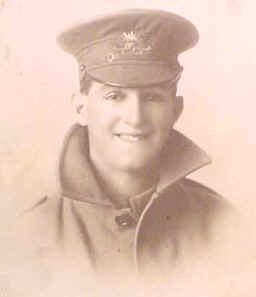 |
|
|||
|
|
||||

The 51st Battalion, Australian Imperial Force was raised at Tel-El-Kebir, Egypt, on 1 March 1916 from half of the 11th Battalion (veterans of the Gallipoli landing) and reinforcements of the 11th and 28th Battalions, all personnel being Western Australian volunteers. During the period 1899-1902, a number of Western Australian volunteers formed the various Mounted Infantry units which served in the Boer War in South Africa. In recognition of their services, These Mounted Infantry were awarded Battle Honour
which was then awarded to the Western Australian Infantry Battalions raised for World War One who, by virtue of being volunteers of the same regional origins, were deemed to be the successors of the Western Australian Mounted Infantry. So the 51st Battalion came to bear its first Battle Honour which is still emblazoned on the Regimental Colour today. The Battalion was granted the colour patch chocolate brown over Saxe blue. The new Battalion, under the command of Lt.Col. A.M.Ross D.S.O., having been allotted to the 13th Infantry Brigade, 4th Australian Division with 49th, 50th and 52nd Battalions, disembarked at Marseilles, France on 11 June 1916 and moved into the front line at Fleurbaix three days later. The 51st Battalion's first major engagements with the enemy occurred at the ruins of Pozieres and Mouquet Farm during the period August - September 1916. During these engagements, the Battalion reached its objectives but was unable to hold the captured positions. In less than three weeks the Battalion had suffered in excess of 650 casualties. The Battalion then shifted to the quieter section of the battlefield in Belgium. There its major battle was with the rain and the mud and at one stage the Battalion was down to approximately 300 men due to the shocking conditions they fought in. On the morning of 2nd April,1917, the Battalion along with the 50th Battalion attacked Noreuil, an outpost village near the Hindenberg Line. The attack was a success, but the Battalion suffered 239 casualties during the assault and subsequent defence of the village. The next major engagement of the 51st Battalion was the counter-attack at Villers Bretonneux on 24/25 April 1918, during which action the Battalion lost 389 men in just two days. Lieutenant C.W.K. Sadlier won the Victoria Cross for his valour during the engagement. For the action, the Battalion was awarded a total of 4l decorations. The depleted 52nd Battalion was incorporated into the 51st Battalion to make up the numbers for the rest of the war. In 1918, a group of English women made a khaki silk flag with the colour patch of the 51st Battalion emblazoned in the middle and presented it to the Battalion. This flag is presently held at the Australian War Memorial, Canberra. On 10 May 1919, at Aiseau in Belgium, the last entry was made in the War Diary by the Commanding Officer Lieutenant Colonel R. Christie, DSO and Bar. The losses during the war had been severe. 83 officers and 2,477 other ranks having been killed, wounded or captured. In 1920, all 60 Infantry Battalions of the AIF were awarded silk 'Union Flags which are to receive all honours and compliments paid to Colours'. 51st Battalion was also awarded the following battle honours:
Because of their gallant efforts during World War One, members of the 51st Battalion were awarded the following decorations:
|
51st BattalionThe 51st Battalion was raised in Egypt in the first week of March 1916, as part of the “doubling” of the AIF. Approximately half of its recruits were Gallipoli veterans from the 11th Battalion, and the other half, fresh reinforcements from Australia. Reflecting the composition of the 11th, the 51st was predominantly composed of men from Western Australia. The battalion became part of the 13th Brigade of the newly-formed 4th Australian Division. Arriving in France on 12 June 1916, the 51st moved into the trenches of the Western Front within a fortnight. It fought in its first major battle at Mouquet Farm in August and September, and suffered casualties equivalent to a third of its strength in both of the attacks (14 August and 3 September) it launched. After Mouquet Farm, the battalion saw out the rest of the year, alternating between front-line duty, and training and labouring behind the line. This routine continued through the bleak winter of 1916–17. Early in 1917, the battalion participated in the advance that followed the German retreat to the Hindenburg Line. On 2 April it attacked at Noreuil, a village which had been fortified to delay the Australian advance. Later in the year, the focus of the AIF’s operations moved to the Ypres sector in Belgium. There the battalion fought in the battle of Messines between 7 and 12 June and the battle of Polygon Wood between 26 and 27 September. Another winter of trench routine followed. With the collapse of Russia in October 1917, a major German offensive on the Western Front was expected in early 1918. This occurred in France in late March and the 4th Division moved to defend positions around Dernancourt on the River Ancre. The 51st Battalion assisted in the repulse of a large German attack on 5 April, launching a critical counter-attack late in the day. The German threat remained until late April, and in the early hours of ANZAC Day 1918 the 51st participated in the now legendary attack to dislodge the enemy from Villers-Bretonneux. When the Allies launched their own offensive in early August, the 51st Battalion was among the units involved and played an active role until the middle of that month, before moving to duties in the rear area. The battalion was ordered forward again in early September, in preparation for its last major operation of the war. On 18 September it provided part of the 4th Division’s reserve for the attack on the Hindenburg “outpost line”. Not long after the Armistice on 11 November 1918, drafts of men began returning to Australia for discharge. With the departure of the last of these on 5 May 1919, the 51st Battalion disbanded. Text from AWM
|

